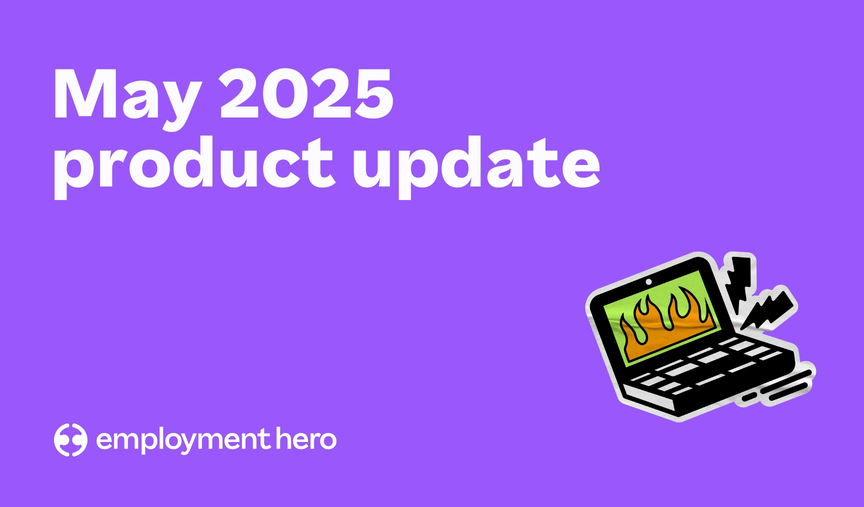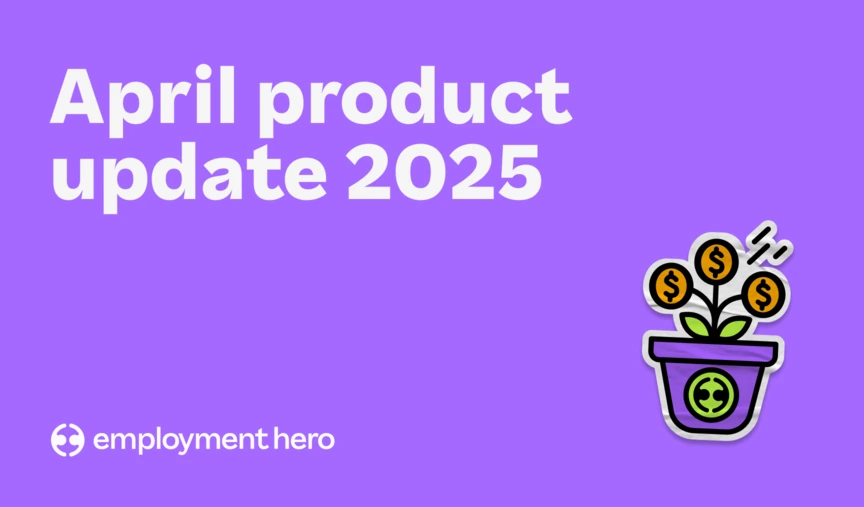What is a workforce optimisation strategy?
Workforce optimisation is a business strategy that can help you manage your employees more effectively. Here’s how it works and how it can benefit your company.

Contents
The modern world is a chaotic place! We’re all trying to achieve a more streamlined life experience. We want to use less to do more, find ways to make tasks more efficient, and generally simplify our day-to-day.
In our general lives, this might mean setting up an alarm that goes off daily without you having to set it each time.
You might put your running shoes next to your bed, so you don’t have the added annoyance of finding them in the early mornings. You might learn facts by listening to an audiobook or educational podcast while you’re out pounding the pavements. So it works well in a jogging context, that much we know for sure. But how can we explore this concept as a business strategy?
So it works well in a jogging context, that much we know for sure. But how can we explore this concept as a business strategy?
What is workforce optimisation (WFO)?
Workforce optimisation is a workforce management strategy that helps streamlines processes involved in operational performance and aims to improve employee productivity.
This business strategy involves automating processes in the workplace to achieve operational efficiency. When optimising the workforce, we are not simply adding more tasks to their to-do lists; instead, we try to make work easier for employees so they are able to tackle business problems effectively.
We might help employees be more productive by seeking better and more efficient ways of completing tasks or taking our admin work online, so we have easily accessible digital copies of our documents.
How does operational efficiency decrease operational costs?
Let’s say we have an employee that manages email marketing. The key data is kept in an excel spreadsheet and sends emails from a personal email program (think Gmail, Outlook, Apple Mail).
Each time they want to send an email, they have to find the content, enter it into the email, find and organise the correct email addresses from the excel spreadsheet, add that to the program and then hit send. This process is highly laborious and doesn’t offer any great reporting metrics.
At the rate at which the employee is able to complete the task, they can deliver about one email a day – with which they can only reach a certain number of customers.
Now if we give the employee a piece of CRM software – a ‘customer relationship management’ tool that can house the business’s database and send emails from templates – we provide a process automation solution that massively improves their workflow.
Suddenly they’re able to build and schedule several emails a day and use their database more strategically. They’re able to complete the same amount of work in half the time. They can easily reach more customers and have extra time for strategic planning, improving customer satisfaction and building customer loyalty.
By implementing this tool, you’ve reduced the need to hire an extra person by streamlining your original employee’s workload. Imagine the financial effect of optimising work for all of your employees.
By making tasks more streamlined you reduce the need to hire several people for one role. You can instead put your budget towards staff that will grow other areas of the business.
In the case of the email marketing employee, where you once felt that you needed to hire a second employee to cover this area to reach more customers, you might instead hire a social media coordinator or digital marketer.
There are a thousand different innovative solutions when it comes to workforce optimisation, but they all point to a similar range of benefits.
What are the benefits of workforce management?
With more tools at our fingertips than ever before, companies are increasingly interested in how tools, habits and software can help gain deeper insights and make informed decisions on transforming their employees’ productivity and services.
Companies that don’t invest in workforce optimisation can risk being left behind by their competitors.
Using outdated technology, or worse, being stuck in the paperwork era, will slow down your employees and affect your business growth.
Whilst all the optimisation benefits are great, these are some big ones that can make all the difference to small business owners.
Increase productivity and employee performance
In the case of the email marketing coordinator, by implementing your CRM you’ve not only streamlined their work, but you’ve also given them the time to be able to innovate in their role instead of simply churning through task after task.
Ask your team across different departments what annoys them the most about their jobs, and it’s likely they’ll point to administrative and repetitive tasks that easily become a time suck on their day. 😨
One survey of over 2,000 workers found that employees are wasting an average of 15 weeks a year on “pointless” tasks due to excessive administrative tasks, outdated technology and lengthy meetings.
This is equivalent to 76 days a year or 142 minutes a day. Yikes! 
When you optimise workflows by implementing helpful and up-to-date tech, automating tasks and moving away from paperwork, you can shift your employee’s time back to excelling in their roles.
When your team spends more time on the work they were hired to do, instead of constantly being interrupted by administrative tasks and dodgy systems, you’ll see productivity skyrocket.
Improves customer satisfaction and quality management
Consider your customer journey – are you providing customers with the best customer experience possible if you’re using outdated systems?
The customer experience reflects on your employee experiences as well. If employees can’t easily access customer calls, or if it takes a long time for your team to access customer data to respond to enquiries, you risk losing out to a company with better customer satisfaction rates.
Improves employee engagement and wellbeing
Working hand-in-hand with having more time to do their jobs, the benefits of an optimised workforce can make a significant difference to employee wellbeing.
When your team is weighed out at work with frustrating and laborious tasks, they’re much more likely to feel under-resourced and overworked, which can quickly lead to burnout.
One of the most pressing issues in the working world, a Gallup poll recently found that 23% of employees reported feeling burnt out very often or always, and an additional 44% reported feeling burnt out sometimes.
We’ve all had that feeling of starting a workday and looking up at a seemingly never-ending mountain of work. When your staff’s work is optimised, this can go a long way in setting up clear working routines and massively reducing overwhelming or repetitive tasks.
Optimised work can make the workday feel much more manageable and more enjoyable as a result. 
How can you start achieving optimised work?
So you’re ready to optimise! Here are some easy steps to get started.
1. Ask your employees about what takes up most of their time
Over the course of a week, get your employees to track their workdays and make a note of how their workflows operate. At the end of the week, check in with them to see what was affecting their productivity most over each day.
Ask some questions about what they found:
- Which processes took up most of their time?
- Which tasks are getting in the way of achieving their best performance?
- What resources do they think would improve their workflow?
- Which tasks do you think could be automated?
If they’re not sure about what resources would be helpful, allocate some time to them to search for a solution together with management. Look at your current performance data, operational costs and capabilities of new technologies and weigh this against the time saved for your staff.
Asking these questions doesn’t have to be a one-time affair. Open up the communication around these areas and invite your team to share feedback or details of new processes they’ve discovered.
Make productive habits easy for your team
Too often at work, we’re hung up on the sheer busyness of our business. Most of our working life is spent thinking about how we can hit the next milestone, the next goal, or the next item on our to-do list. Way less time is spent thinking about the best way to do these things.
The best way to get employees to stay focused on tackling important tasks is by setting up a good routine that integrates business performance considerations into their day-to-day workflow.
Putting good routines in place means better decision-making as employees do not have to rely on willpower alone.
What productivity habits can your team implement to make the path to great work easier?
Here are a couple of ideas to get you started:
- Create and circulate agendas to make meetings as effective as possible
- Encourage ‘deep work’ times so that employees can work undisturbed
- Schedule regular meetings that take place at the same time each week
- Don’t insist that employees answer emails instantly throughout the day
- Reward employee ideas that suggest time-saving systems and software
Ditch the paperwork and implement cloud-based software
Paperwork is so yesterday. If you’re still relying on paperwork and the physical storing of important documents – there’s an easier way!
Taking documents to the cloud is a better option for so many reasons. Cloud-based documents reduce clutter in office spaces, and they are safer and more secure than physical filing systems.
Documents can be quickly shared or worked on collaboratively and in general, provide much faster access to information and better data visibility.
🌱 Bonus benefit! Moving away from outdated systems that rely on paperwork is a win for the planet. Here are some more ways to promote an environmentally sustainable office.
Optimising HR processes with Employment Hero
By using a cloud-based HR management solution you can make the job of your HR or office manager so much easier. Leave management becomes so much simpler, as employees ditch paper request forms to submit their time through the platform, ready for their manager to approve and reference at a glance.
Employee information – including personal info, banking details and compliance certificates – can be updated by the employee themselves. Timesheets can be submitted digitally ready from an employee’s mobile, ready for payroll.
All of these capabilities create a secure source of truth and greatly reduce the risk of human error. The HR manager or business owner can feel much more secure knowing that information is easily accessible from anywhere at any time.
😉 Yes, it just so happens that Employment Hero can do all of these things. And yes, we’ve saved small businesses thousands of dollars by optimising HR, payroll and people management processes.
Learn how we could save your company time and money by booking a demo with a small business specialist.
Related Resources
-
 Read more: Product Update: May 2025
Read more: Product Update: May 2025Product Update: May 2025
Follow our May 2025 product update as we share all of the latest and greatest features we’ve released over the…
-
 Read more: Product Update: April 2025
Read more: Product Update: April 2025Product Update: April 2025
Follow our April 2025 product update as we share all of the latest and greatest features we’ve released over the…
-
 Read more: Product Update: March 2025
Read more: Product Update: March 2025Product Update: March 2025
Follow our March 2025 product update as we share all of the latest and greatest features we’ve released over the…








